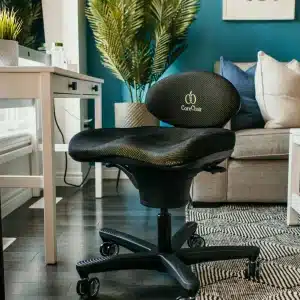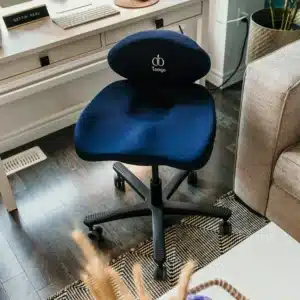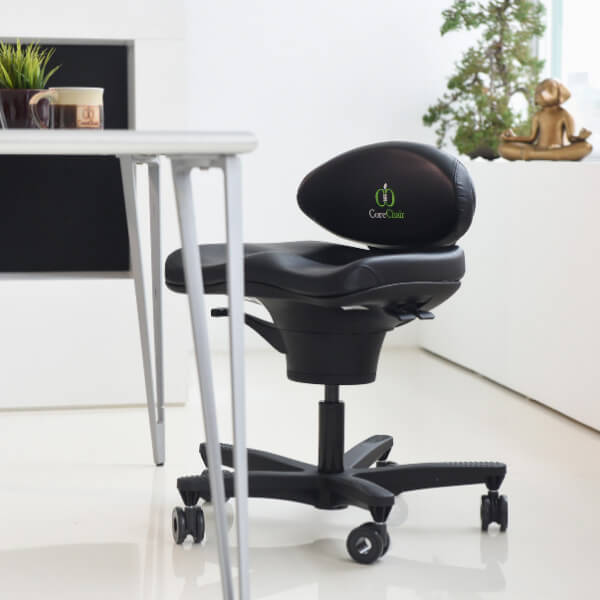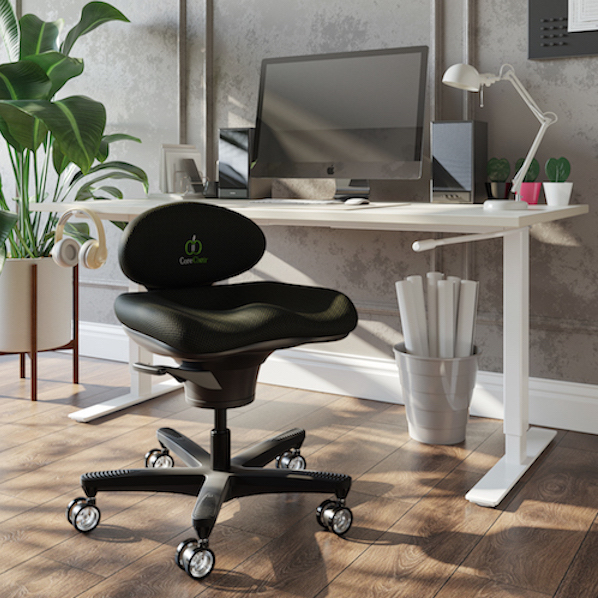How do I protect my tailbone from sitting?
Sitting for long periods of time can put a great deal of strain on your tailbone, leading to pain and discomfort that can affect your ability to work or participate in other activities. To prevent tailbone pain while sitting, you should use an office chair specifically designed to provide support and cushioning to the lower back, pelvis, and tailbone area. These office chairs feature ergonomic designs that are tailored to different body shapes, and include well designed shapes to adapt to the 95 percentile. A good office chair should also have adjustable seat height, helping you find the perfect position for your body type.
In addition to using an office chair designed for comfort, there are other things that you can do to protect your tailbone from sitting:
• Take regular breaks throughout the day: Taking frequent breaks from sitting is one of the best ways to reduce chronic pain in the lower back and tailbone area. Getting up every 20 minutes or so can help reduce fatigue and improve circulation in this area. Using a chair that encourages movement can also be beneficial in rhythmic weighting and unweighting of critical support areas. Of course, it is always beneficial to get up and move as often as possible and this might include walking meetings or walking telephone calls.
• Use cushions or pillows: Using cushions or pillows between your back and office chair can reduce pressure on the tailbone by providing extra cushioning. This strategy encourages your pelvis to tilt forward and mechanically reduces pressure off the tailbone.
• Strengthen your core muscles: Strengthening your core muscles – not just those found in the abdominal region, but also the complex of tiny muscle groups that wrap your spine and connect through to your pelvis and femur. – A stronger core can help support your spine and reduce strain on the lower back and tailbone area when sitting. You may want to consult with a trainer, chiropractor, kinesiologist, or physical therapist if you need assistance with finding core-strengthening exercises that are right for you. CoreChair provides the best core-strengthening, active siting experience available on the market.
• Adjust your posture: Proper posture is essential when it comes to preventing tailbone pain while sitting down. When seated, make sure that both feet are flat on the floor with knees bent at a 90-degree angle or more, with an open hip angle where your thighs are on a downward slope toward your knees.
By following these tips, you can effectively protect your tailbone from pain while seated without compromising comfort or productivity levels at work or home office settings!
What kind of chair is best for tailbone pain?
When looking for an office chair that can help with tailbone pain first the seat must be shaped to mechanically offload or minimize sitting pressures from this area. This generally means that the seated position has focused support on the thigh and top of the back of the pelvis, effectively stabilizing the pelvis and providing orthopedic support similar to how the well known Birkenstock shoes support the anatomical structure of the foot.
For those who experience tailbone pain caused by sitting in office chairs for long periods, one of the best options is a seat cushion made specifically for this purpose. This type of cushion usually features contoured foam padding and coverings that help keep pressure off sensitive areas around the tailbone while still providing firm support where needed. Sometimes special gel-filled cushions are used to reduce heat buildup and eliminate uncomfortable pressure points during extended sitting sessions.
In general, office chairs with superior ergonomic design features combined with additional lumbar support cushions seem to work well for people suffering from tailbone pain due to prolonged sitting in office environments. Ideally you can find a sitting solution that does not require a lot of add-on components and a lot of adjustments that might become confused over time.
How do you relieve tailbone pain in an office chair?
Relieving tailbone pain in an office chair can be achieved through a few different methods. First, simply adjust the chair to provide proper lumbar and pelvic support by adjusting both the height and depth of the seatback. Additionally, adding a cushion or backrest directly onto the chairs to provide additional support may help reduce discomfort. Lastly, ensure that your feet are flat on the floor while sitting in order to reduce pressure and tension on your tailbone area. With these small modifications you can improve comfort while at work and alleviate tailbone pain.

CoreChair – the best office chair for tailbone pain
CoreChair is the premiere office chair designed to reduce lower back and tailbone pain. It’s ergonomically designed with a contoured seat and lumbar support system that provide maximum comfort and support for your lower back, tailbone, and entire spine. The high-density foam cushioning absorbs pressure and shock from everyday movement so you can stay productive without experiencing any pain.
The adjustable height allows you to customize the chair for optimal comfort, allowing you to sit higher and the contoured seat follows your thigh position on a downward slope toward your knees. The adjustable resistance allows you to keep moving while you sit, which has many health benefits but also allows greater blood flow to this area.
CoreChair also provides exceptional posture support to keep your back straight while sitting, thus avoiding further damage or injury to your tailbone and spine. These chairs also come with adjustable height settings, allowing you to find the perfect level of elevation to alleviate pressure points in your lower back and coccyx area.
CoreChair is also made of premium materials that meet all manufacturing standards for safety and durability. It’s finished off with a sleek design that will look great in any modern home or office space. With its combination of comfort, style, and functionality, the CoreChair is an ideal choice for anyone suffering from tailbone pain looking for an office chair that can provide relief without sacrificing quality or design.










